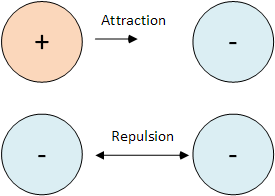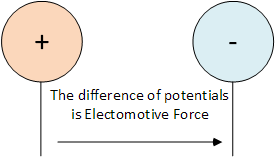What an Electricity is?
As you know, all bodies are made up of tiny particles - molecules, molecules are made of atoms, atoms are made of even smaller protons, neutrons, and electrons.
Each particle, molecule, or body has its own energy charge.
Bodies with a positive ( + ) charge are attracted to bodies with a negative charge
(- ) charge, and if the same-named - ( + ) with ( + ) and ( - ) with ( - ), then repel.

The intensity of movement of particles in substances depends on many causes: deformation, exposure to light, heating, friction, chemical reactions.
Electrons move around the nucleus and are located at different distances from it, so the interaction of the positive charges of the protons of the nucleus with the electrons is not the same, it weakens as the electron moves away from the nucleus.
Thus, the number of electrons that are most distant from the nucleus and most loosely connected to the nucleus may change.
The number of electrons in the atoms of materials can be changed by friction, heating, light, deformation, chemical reactions, etc.
It is known that some substances emit electrons under the action of light and these substances are charged with a positive charge.
This phenomenon is called the photoelectric effect, it is based on the principle of operation of solar cells.
When metals are heated to a certain temperature, the velocities of particles that are loosely bound to the core of electrons reach values at which their kinetic energy is sufficient to tear the electrons from the core. The electrons become free from negative charges and the metal atoms that have lost electrons gain a positive charge.
This phenomenon is called thermionic emission and is used in particular in cathode ray tubes of TVs.
In chemical sources of electrical energy, positive and negative poles are formed as a result of charge transfer during chemical reactions (batteries).
When mechanical deformation (compression, tension, etc.) occurs on the surface of some crystalline bodies (for example, quartz), electric charges occur.
This phenomenon is called the direct piezoelectric effect. In the reverse piezoelectric effect, the crystal is deformed by electricity.
This forms the sources of the two polarities (+) and (-).
Each polarity has its own value named potential.
The energy reserve (potential energy) of a unit of electricity located at a given point in the electric field is called the potential.
The greater the potential, the greater the difference between (+) and (-).
So, this potential difference (+) and ( - ) - is the electromotive force (EMF).

In a closed circuit, an electric current flows under the influence of the electromotive force (EMF) of the energy source. The electromotive force occurs in the source and in the absence of current in the circuit, i.e. when the circuit is open.

At idle, i.e. when there is no current in the circuit, the EMF is equal to the potential difference at the terminals of the energy source. Just like the potential difference, EMF is measured in volts (V).
Both with a closed and open electrical circuit, the EMF continuously maintains the potential difference at the terminals of the energy source.
In the presence of EMF, you can make sure if you attach a device called a voltmeter to the poles of the energy source (instead of linear wires).
The voltmeter needle will deviate by a certain angle. The digital device will change the value on the display. The greater the deviation, the greater the EMF of the energy source.
However, the voltmeter will not show the value of EMF, but, as we will see later, the voltage at the source terminals, which, like EMF, is measured in volts (V), kilovolts (kV), millivolts (mV). ( 1volt=1000millivolt; 1000volt = 1kilvolt, etc.)
You can imagine these sources as small layouts of large sources of electrical energy that a human has created (generators, batteries, etc.).

